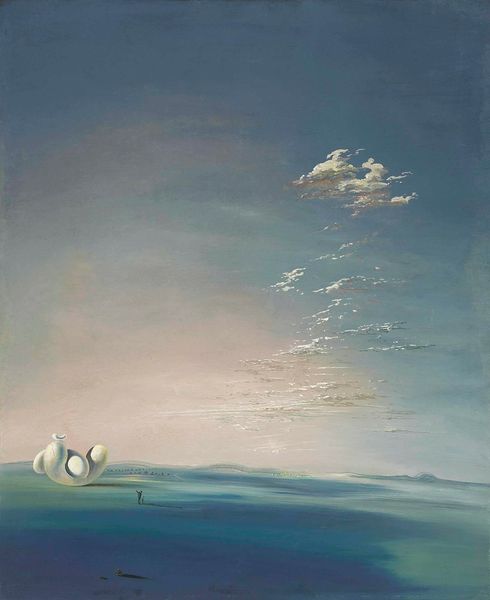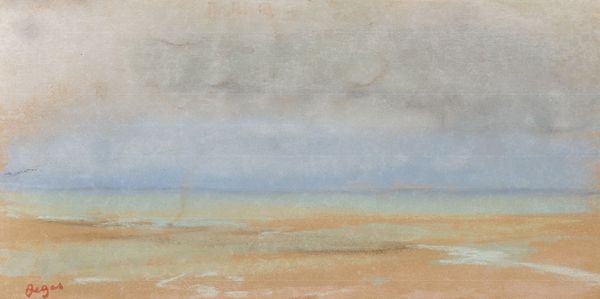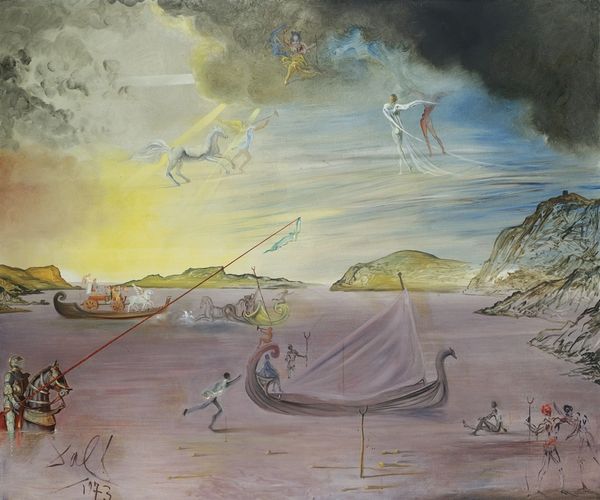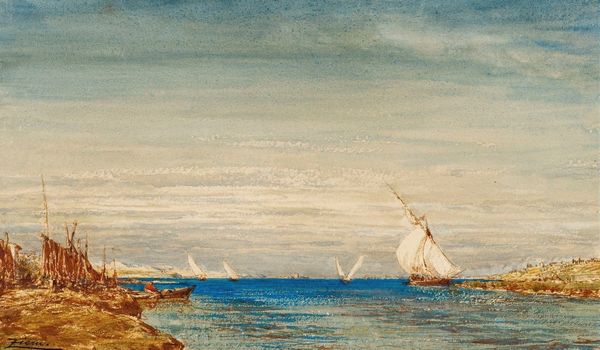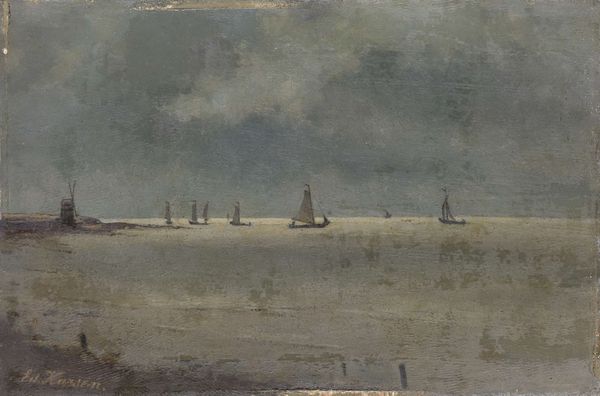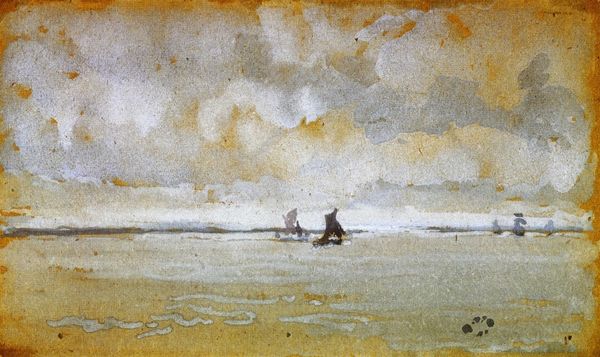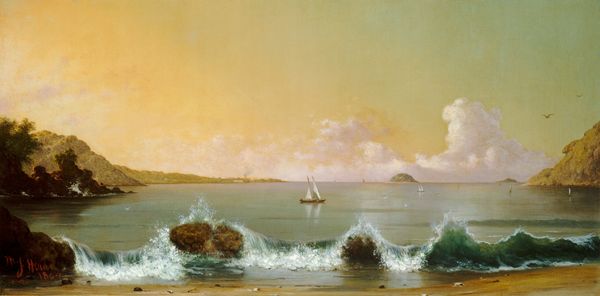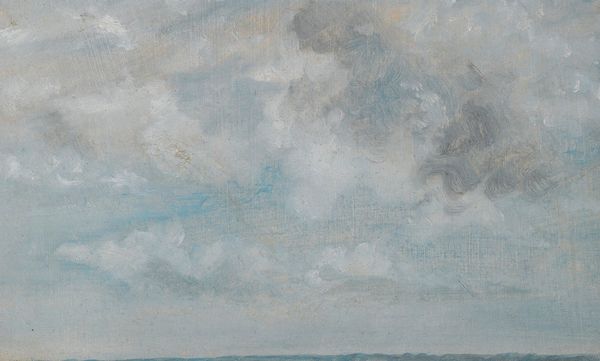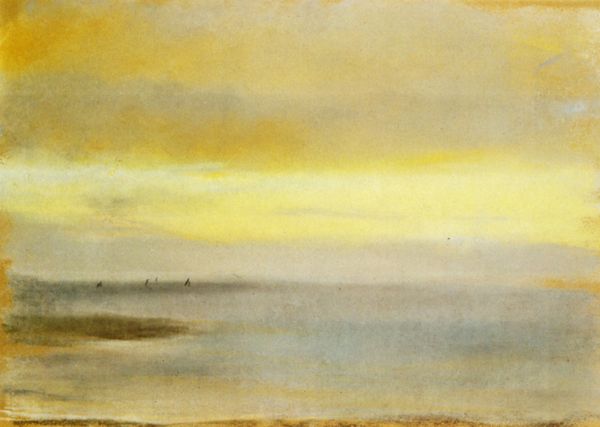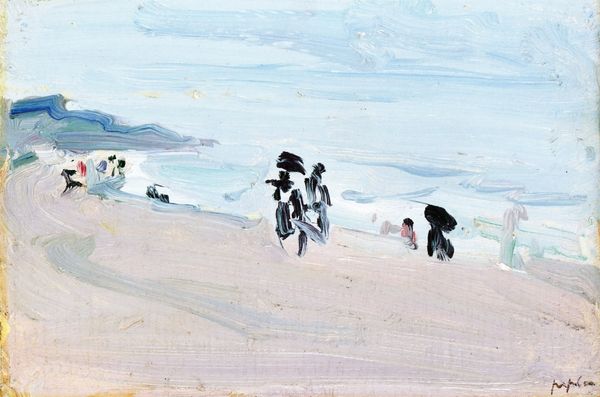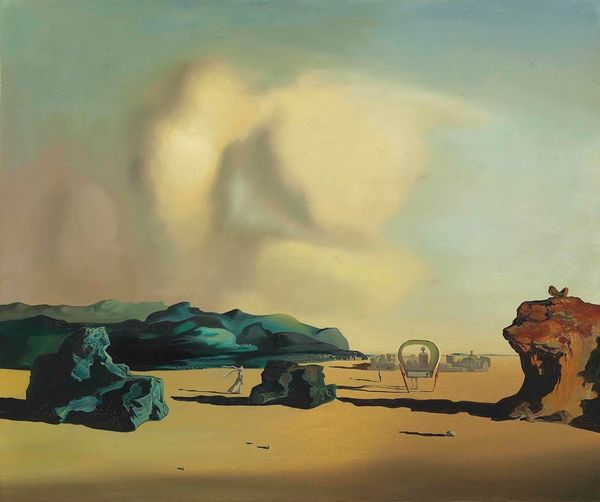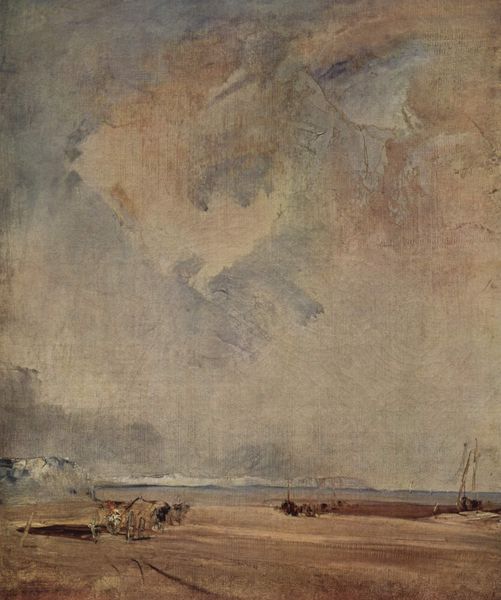
Dimensions: support: 222 x 267 mm frame: 344 x 389 x 60 mm
Copyright: © Salvador Dali, Gala-Salvador Dali Foundation/DACS, London 2014 | CC-BY-NC-ND 4.0 DEED, Photo: Tate
Editor: This is Salvador Dalí's 'Forgotten Horizon,' date unknown, oil on cardboard. I'm really struck by how the figures seem almost collaged onto the landscape. What is your take on this strange composition? Curator: Well, consider the physical act of layering paint here. The very process mimics the superimposition of realities Dalí was exploring. Look at how the material application creates a tension between the foreground figures, seemingly more 'real', and the desolate background, almost ghostly in its lack of detail. How does this materiality speak to a critique of artistic production itself? Editor: That's interesting. The textures and the way the paint is applied almost make it feel like a stage set, a constructed reality. Curator: Exactly! The materials themselves become active participants in constructing meaning, disrupting the traditional idea of art as simply a mimetic representation of reality. Editor: I see what you mean. Thanks for helping me understand that! Curator: My pleasure. I am glad we examined the means of production together.
Comments
Join the conversation
Join millions of artists and users on Artera today and experience the ultimate creative platform.
tate 6 months ago
⋮
Dalí’s disturbing, imaginary landscapes often contain references to his own life. Forgotten Horizon is a typical example, drawing upon memories of childhood holidays on the beach at Rosas on the Costa Brava. The striding woman in the distance is his cousin, Carolinetta, while the dancing figures in the foreground were inspired by a picture on a postcard. Dalí intended the effect to be hallucinatory, with the figures appearing as if projected onto a prepared background or theatrical set. Gallery label, December 2005
